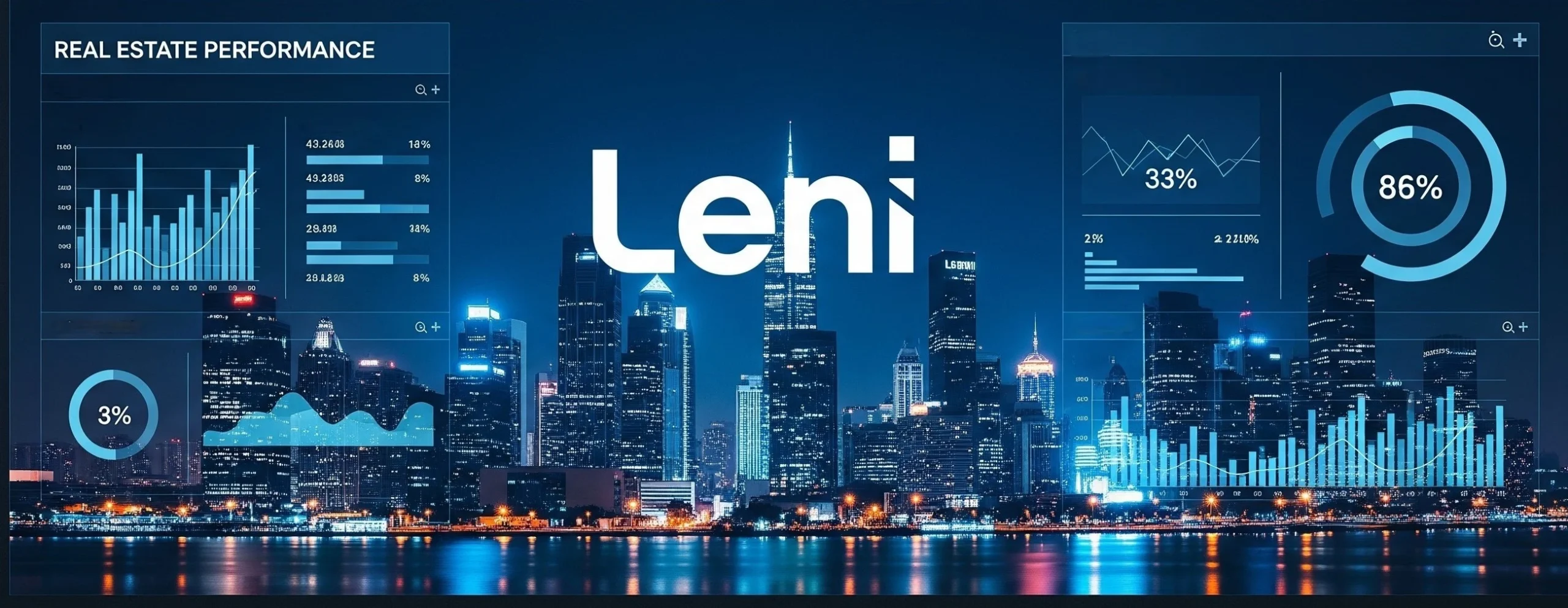Real estate asset management is shifting from intuition-based decisions to data-backed strategies. With rising complexity and investor expectations, business analytics platforms are playing a central role in portfolio oversight and performance optimization.
An estimated 70% of real estate executives are increasing investment in analytics technologies. These tools now underpin many Real Estate Asset Management Platforms, enabling firms to assess performance, manage risk, and improve efficiency at scale.

Business Analytics in Real Estate: Why It Matters in Asset Management
Smarter Investment Decisions
Analytics platforms equipped with predictive modeling help firms estimate future property values, rental demand, and market shifts. By combining historical trends with real-time data, investors can make better acquisition, disposition, and capital allocation choices. Portfolios using analytics have reported returns up to 8.4% higher than those using traditional management methods.
For instance, a mid-sized investor using data on employment trends, migration patterns, and school district ratings can better target suburban multifamily properties with high growth potential.
Operational Efficiency and Cost Savings
Centralized dashboards and automated workflows streamline property operations. Features like predictive maintenance and energy usage tracking can reduce costs by 15% to 25%. This efficiency improves margins while minimizing manual oversight.
As an example, a 100-unit apartment complex using predictive maintenance might avoid major HVAC system failures, saving $30,000–$50,000 annually in emergency repairs and lost rent.
Real-Time Risk Monitoring
Modern analytics tools integrate diverse data sources to detect risks early. These include tenant defaults, compliance issues, or market downturns. Having a real-time risk profile allows asset managers to act proactively and protect portfolio value.
Some platforms use geospatial analytics and macroeconomic indicators to flag regions with rising vacancy rates or declining rental values, prompting timely repositioning strategies.
Full Portfolio Visibility
Analytics platforms replace siloed reports with a centralized view of all assets. By consolidating asset management metrics in one place, managers can compare performance across properties, identify underperforming units, and shift capital to maximize ROI—all from a single interface.
For example, comparing net operating income (NOI) and cap rates across similar property types in different submarkets can highlight where to deploy renovation budgets for the greatest impact.
Better Tenant Retention
Tenant-focused analytics track satisfaction, behavior, and feedback. This insight helps managers design living and working environments that align with tenant needs, improving retention and long-term income stability.
For example, monitoring service request frequency or move-out surveys can reveal operational issues before they lead to turnover. A reduction in annual turnover from 40% to 25% could translate to thousands saved in leasing and vacancy costs.
Faster, More Accurate Valuations
Automated Valuation Models (AVMs) powered by machine learning can deliver estimates with a 3–5% margin of error. These are especially useful when managing large or geographically dispersed portfolios, where traditional appraisals are costly or slow.
AVMs can analyze recent sales comps, rent trends, and construction costs in real time, especially helpful in fast-moving markets like Austin or Phoenix, where values can shift significantly in months.
Sustainability Monitoring
Analytics also help track energy usage, carbon output, and water consumption. Many platforms integrate with IoT sensors to provide real-time sustainability metrics, aiding compliance with environmental regulations and supporting green initiatives.
Properties using sustainability analytics may also qualify for green financing programs, like Fannie Mae’s Green Rewards, which offer better loan terms for buildings meeting energy efficiency benchmarks.
Key Takeaway
Real estate analytics platforms are no longer optional. They’re essential tools for investors and asset managers who want to modernize operations, reduce risk, and maximize returns. With the right platform in place, data becomes a strategic advantage.

FAQs: Real Estate Analytics Platforms
- What is a real estate analytics platform?
A software solution that centralizes data and helps evaluate asset performance, forecast trends, and make data-driven decisions. - How does analytics improve investment decisions?
By using predictive modeling and real-time data to identify profitable opportunities and reduce risk. - Can analytics tools replace traditional property management software?
Yes. Many platforms integrate or replace traditional tools by offering features like predictive maintenance alerts, performance tracking, and centralized dashboards. - Are these platforms useful for small property managers?
Yes. Smaller operators can use analytics to improve operations, cut costs, and compete more effectively. Entry-level platforms often offer tiered pricing or integrations with existing property management tools. - What types of data do these platforms use?
Common sources include rent rolls, maintenance logs, market comparables, utility data, tenant surveys, and IoT sensors. Some platforms also ingest third-party data like credit scores, census trends, and weather forecasts. - How do analytics tools support sustainability?
They monitor energy and water usage, track emissions, and help meet environmental compliance goals. Many also benchmark performance against standards like ENERGY STAR or LEED. - What sets Leni apart?
Leni offers AI-driven insights, customizable reporting, and real-time alerts. All in a user-friendly interface designed for property managers and investors. It also supports integrations with major property management and accounting systems.



